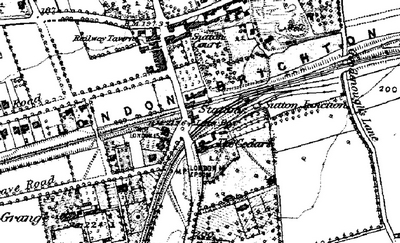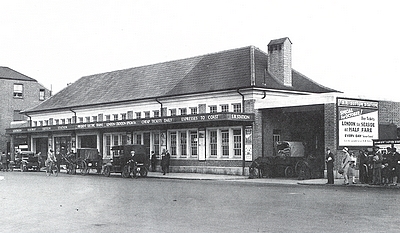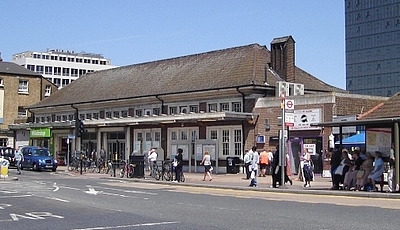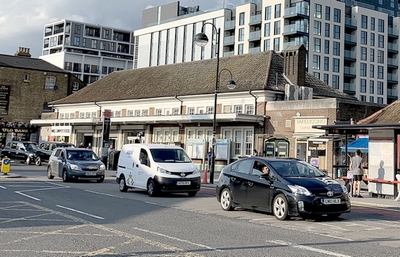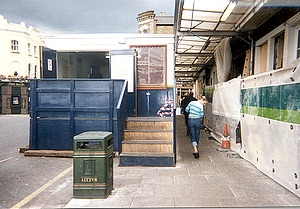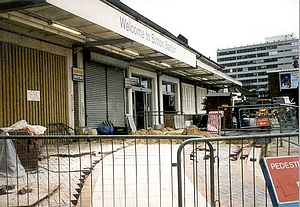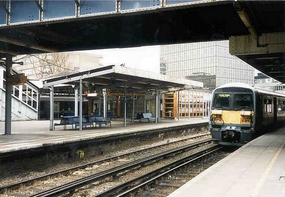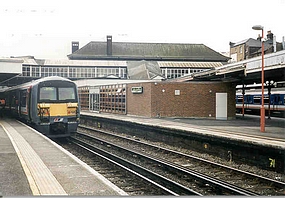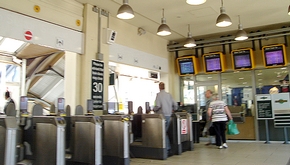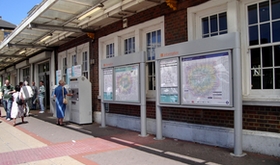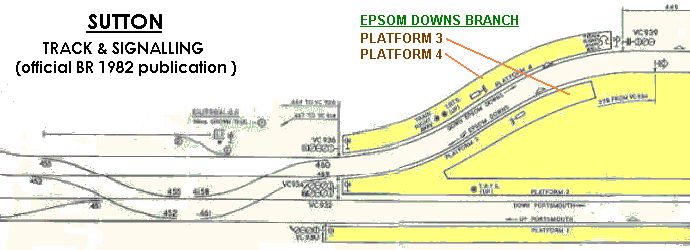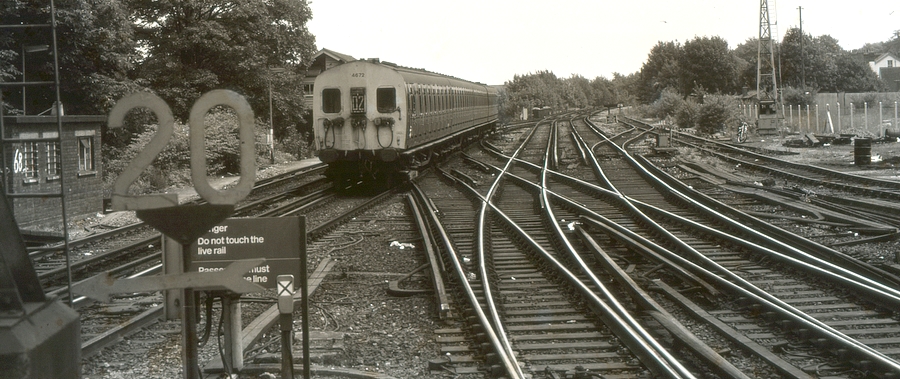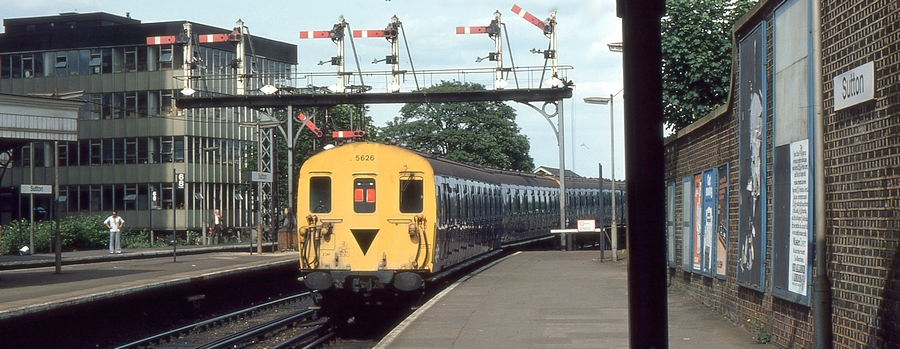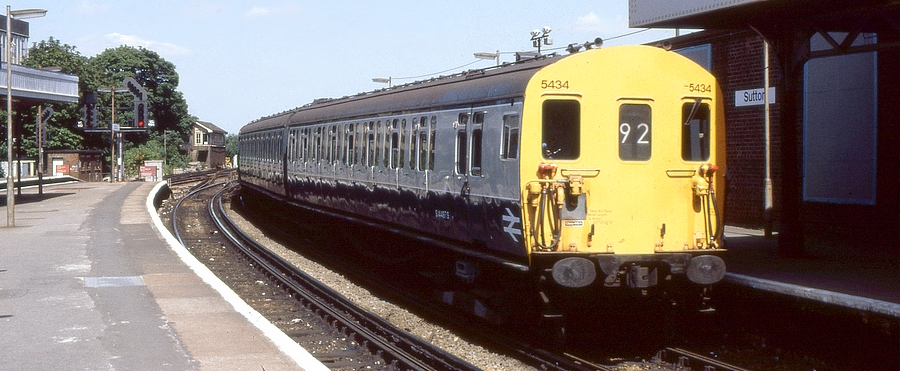In his Imperial Gazetteer of
England and Wales (published between 1870 and 1872), John
Marius Wilson described Sutton as
First mentioned in the Doomsday Book (1086) as Sudtone (meaning “south village” or “south farmstead”) and recorded as having 200 people live in its boundaries, Sutton still only counted a mere 579 inhabitants in 1801. |
|||
| This gradual growth of the station in size and importance was reflected in a succession of station buildings. | |||
|
|||
| The Southern is known for a number of architectural styles when it comes to station buildings, ranging from Victorian, Mock Tudor and Italianate to its famous Art Deco designs. | |||
|
|||
| In the main platform area, a new buffet building had been completed by that date in the V-shaped island formed by platforms 2 and 3. | |||
| Sutton also benefitted from Southern's extensive station upgrading programme, having been one of the first stations to have QUICKticket machines installed in May 2005. | |||
| The track layout at Sutton has not changed substantially since it became a double junction in 1868, apart from the disappearance of the once fairly large goods yard which was cut back after World War Two and is now reduced to one (somewhat overgrown) engineers siding. | |||
(click for a detailed view of platforms 3 and 4 diagram) |
|||
|
|||
|
|||
| BIBLIOGRAPHY MEACHAM Michelle (2022) "Case Study Sutton Station – Breathing new life into an old station", Twinfix Blog, 3 October 2022 MITCHELL Vic & Keith Smith (1992) West Croydon to Epsom, including the Epsom Downs Branch, Middleton Press |
|||


